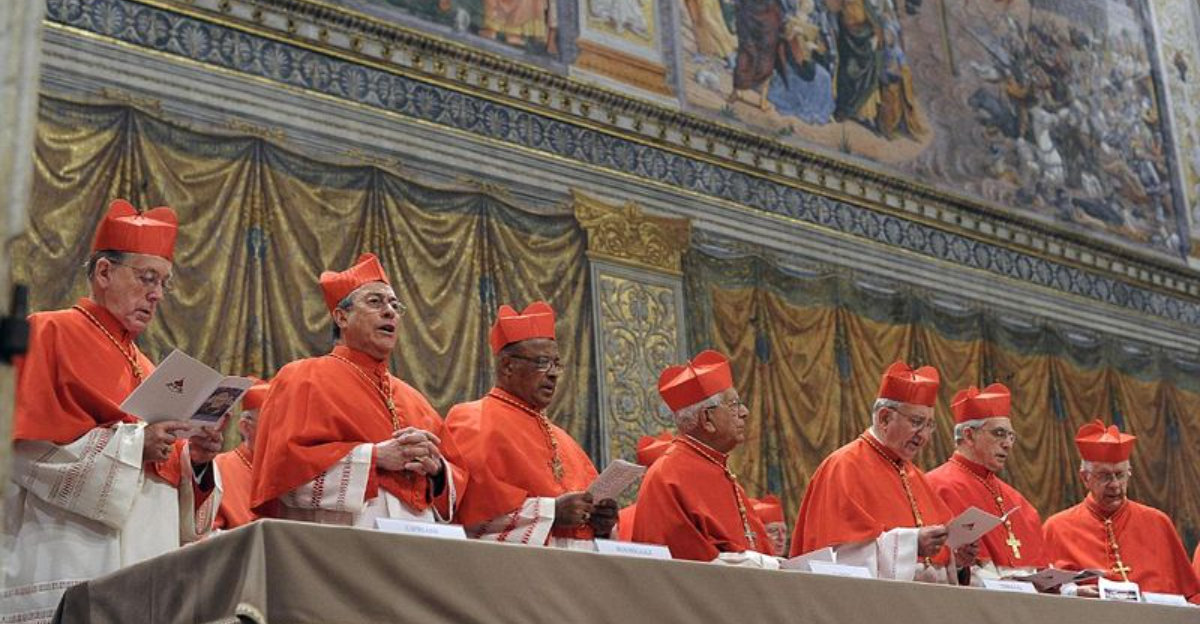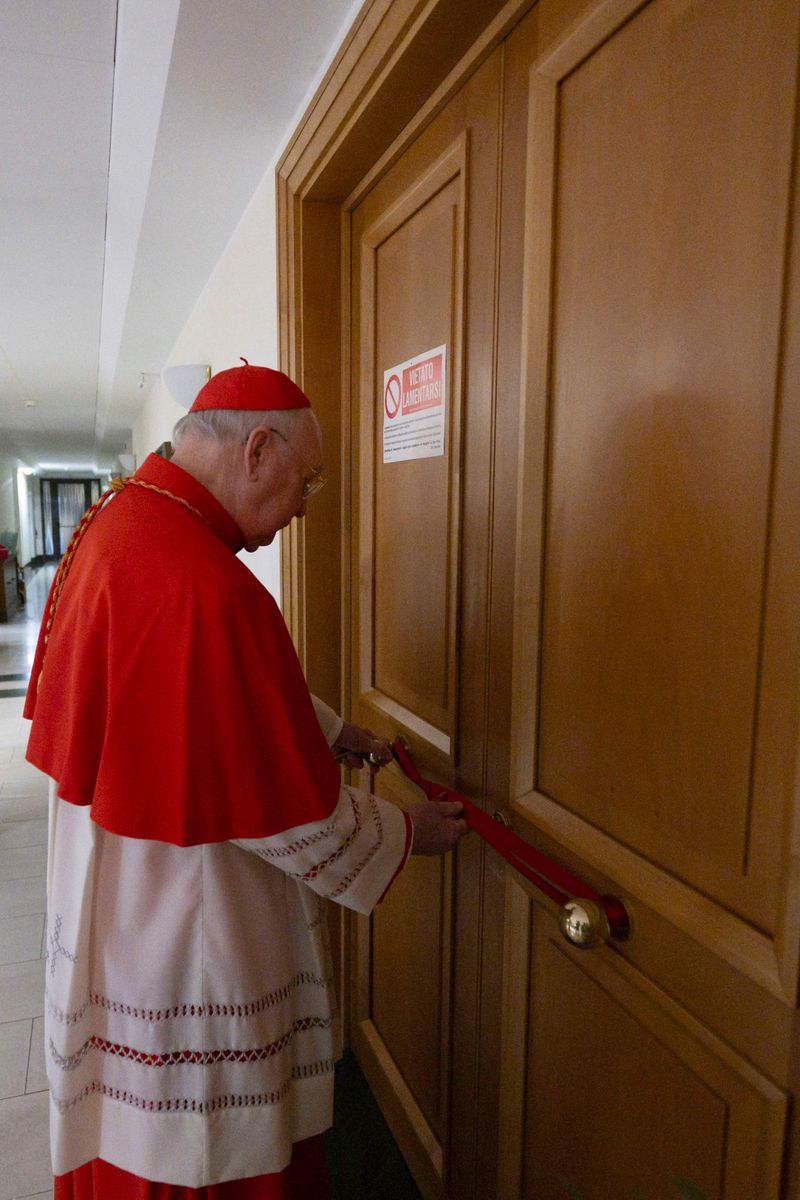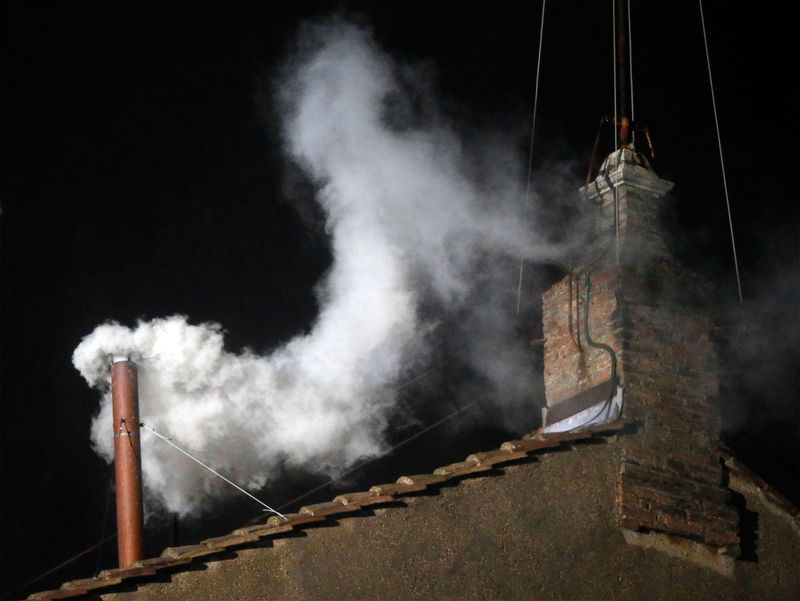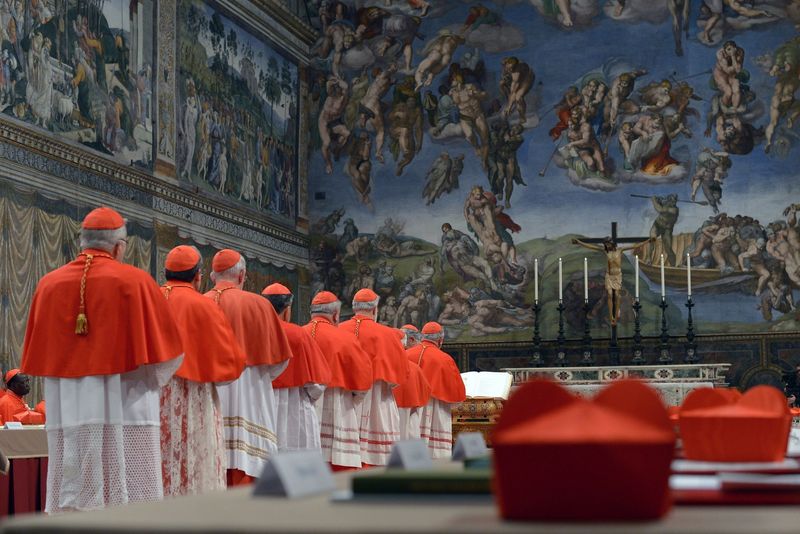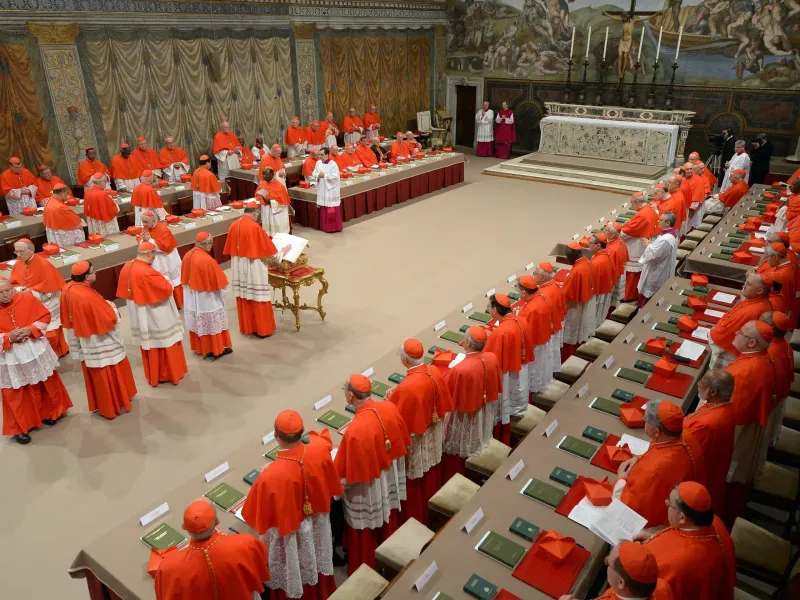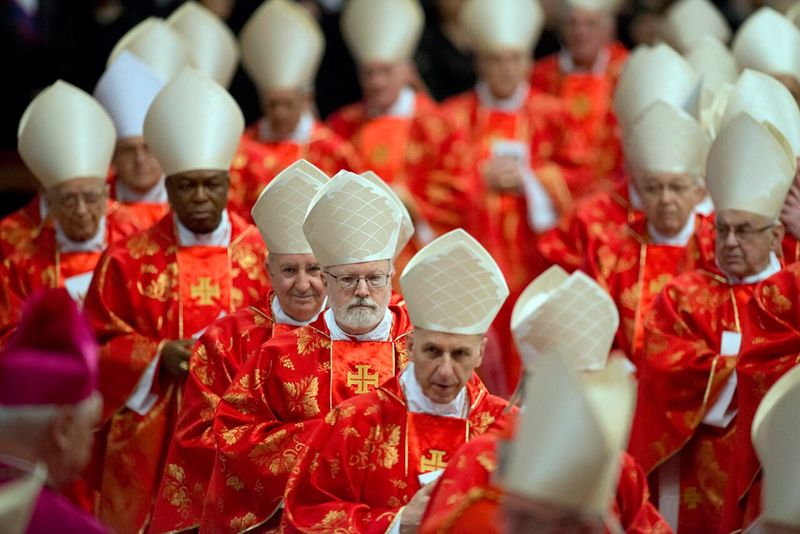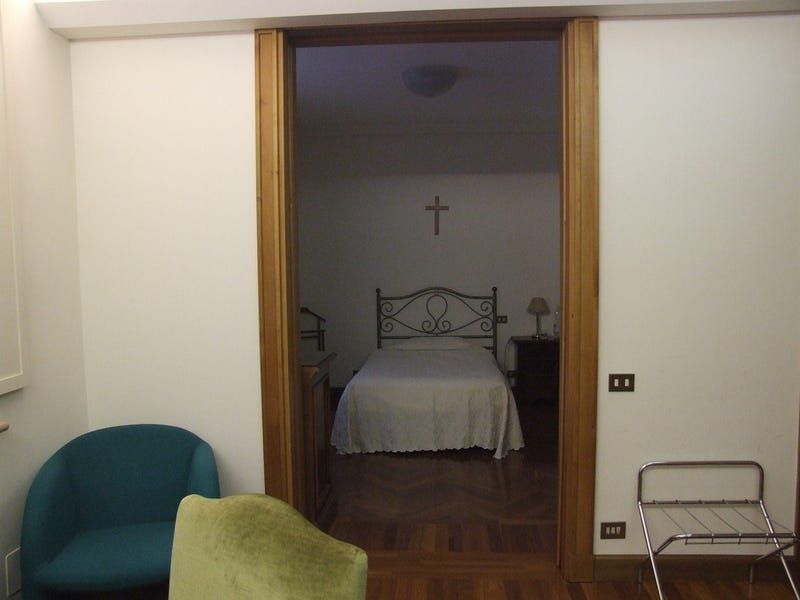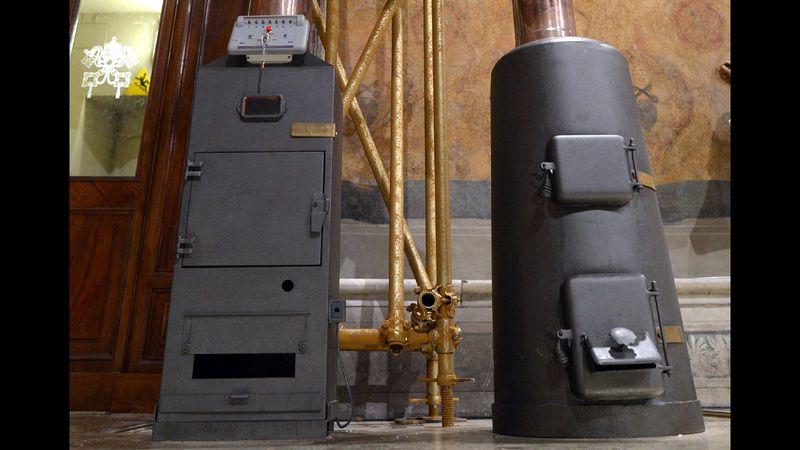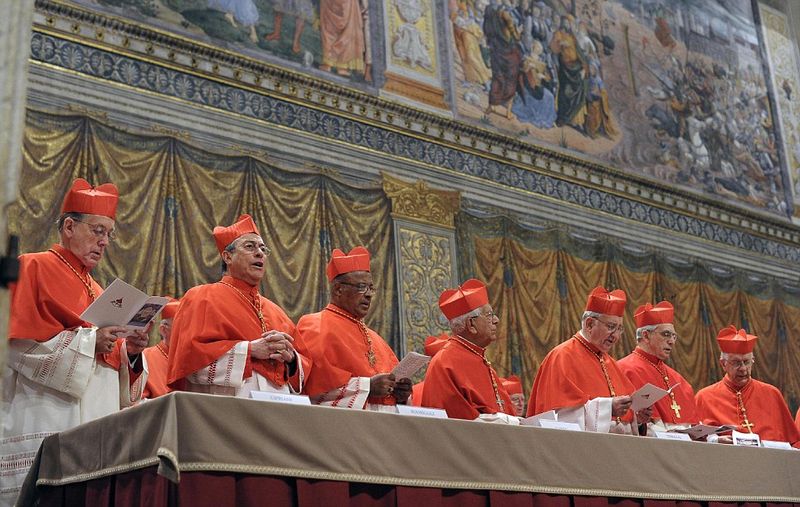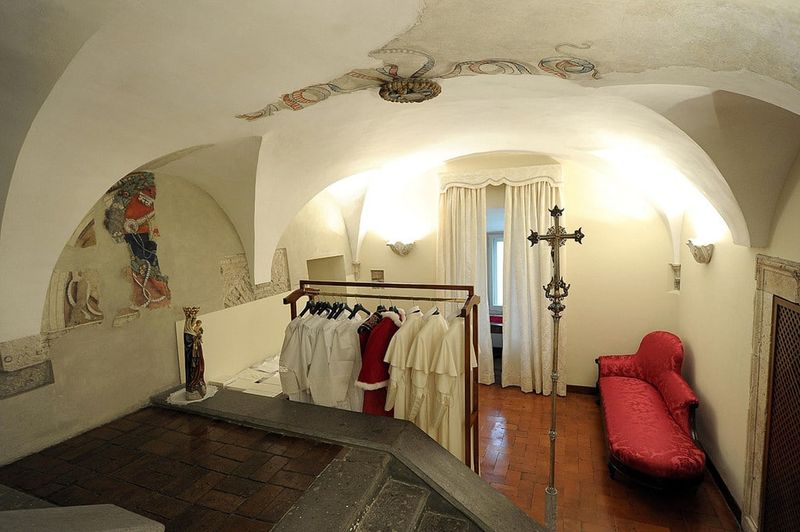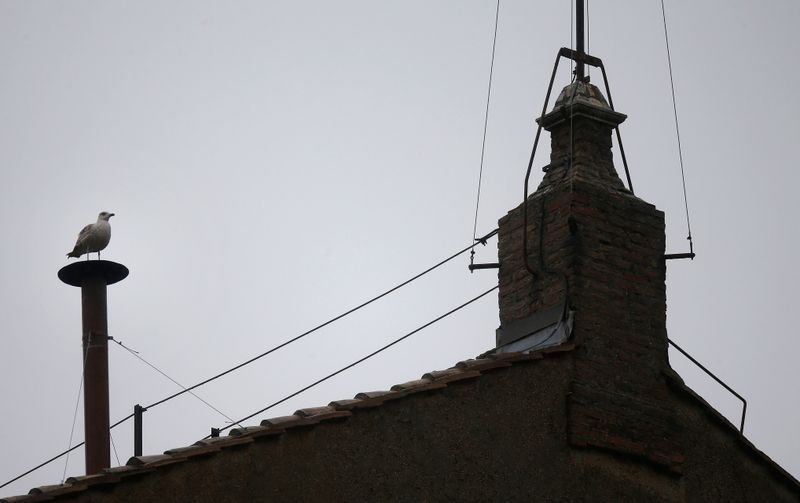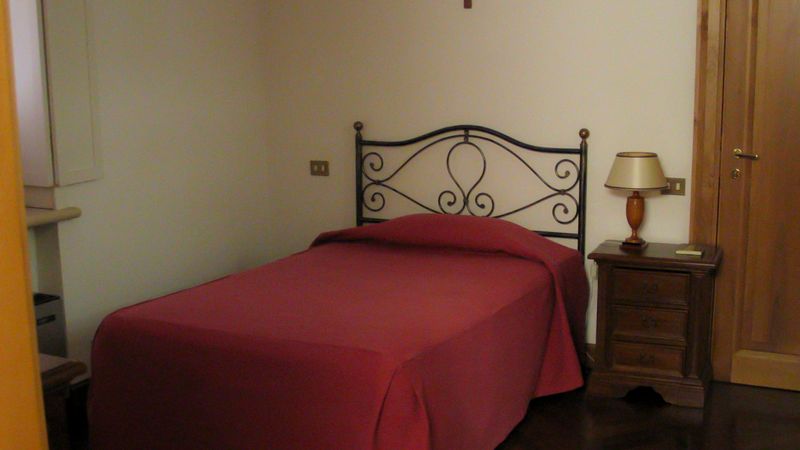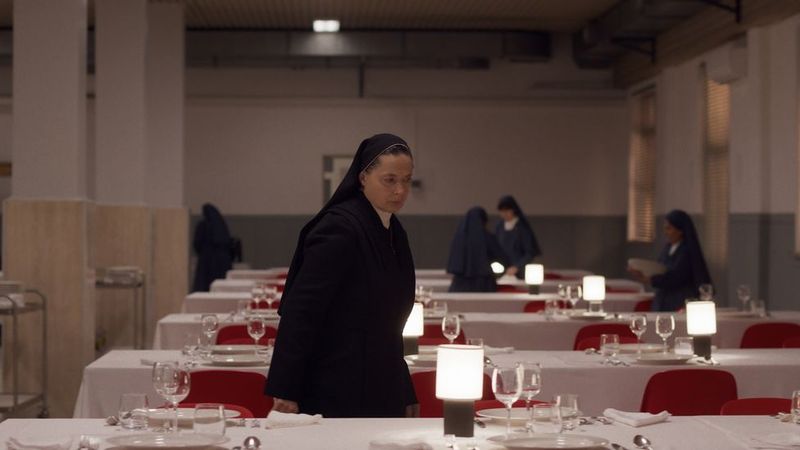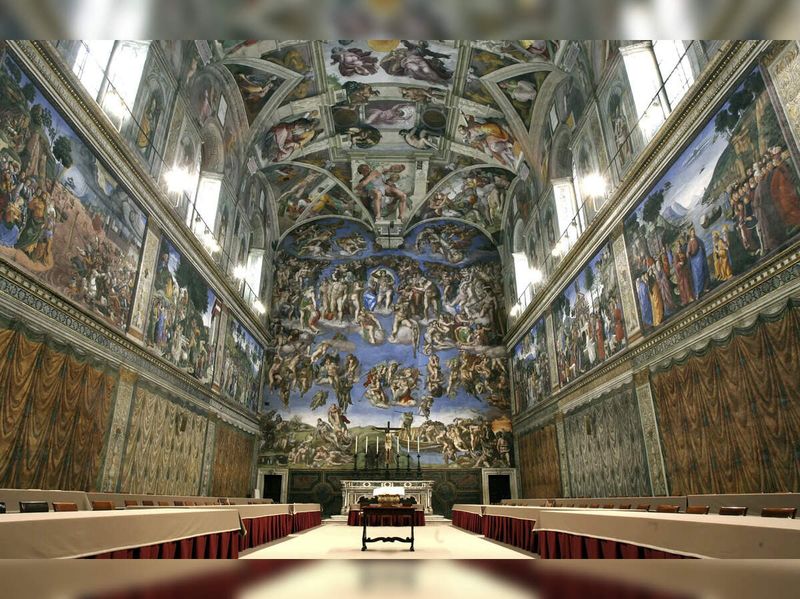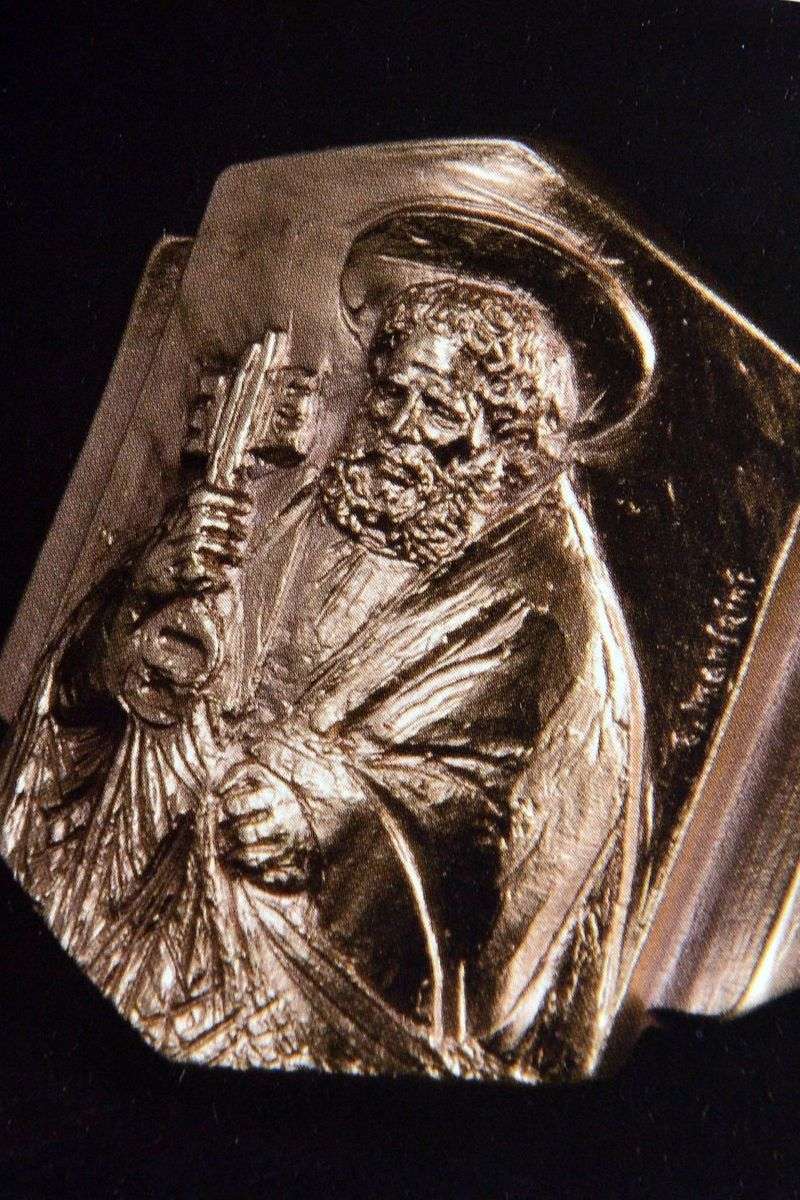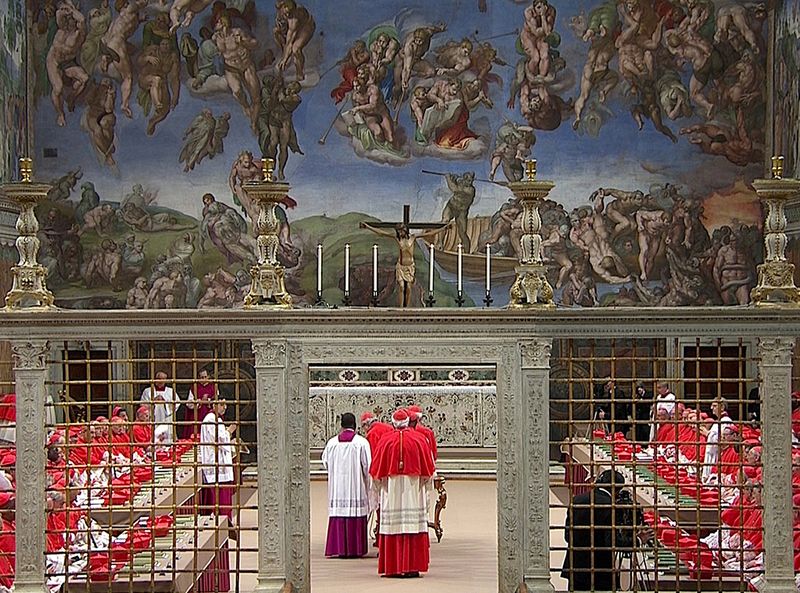When Catholics around the world await the election of a new pope, a secret process unfolds behind the locked doors of the Sistine Chapel. This mysterious tradition, known as a papal conclave, has existed for centuries and follows strict rules.
From smoke signals to sealed rooms, these gatherings blend ancient customs with modern security to select the next leader of the Catholic Church.
1. Locked Away From The World
Cardinals literally get locked inside the Vatican during conclaves. The Latin term ‘cum clave’ actually means ‘with a key,’ reflecting how participants are sealed off from outside influences.
This extreme isolation didn’t always exist. It became mandatory in 1274 after an election in Viterbo dragged on for nearly three years! Frustrated locals eventually removed the palazzo’s roof and reduced the cardinals’ food to bread and water until they finally chose a pope.
2. Smoke Signals: Black or White?
The famous smoke signals from the Sistine Chapel’s chimney tell the world whether a new pope has been elected. Black smoke means ‘no decision yet,’ while white smoke announces ‘Habemus Papam’ (We have a pope).
For centuries, wet straw created black smoke and dry straw made white smoke. Modern conclaves now use chemical additives after several confusing incidents with ambiguous gray smoke that left crowds puzzled about whether a new pontiff had been chosen.
3. Voting Until Exhaustion
Cardinals must vote four times daily until someone receives a two-thirds majority. Morning brings two ballots, afternoon brings two more—a grueling schedule that continues day after day.
The longest conclave in modern history occurred in 1831, lasting a staggering 54 days with 83 ballots! By contrast, the 2013 conclave that elected Pope Francis wrapped up in just two days and five ballots, demonstrating how dramatically the process can vary in length.
4. Cell Phones Are Strictly Forbidden
Swiss Guards sweep the Sistine Chapel with electronic detectors before each conclave. They’re hunting for hidden microphones, cameras, and other devices that might compromise secrecy.
Cardinals must surrender all electronic devices. The Vatican even installed special jamming equipment in 2013 to block cell signals and prevent any digital communication with the outside world.
Anyone caught with unauthorized technology faces immediate excommunication—the Church’s most severe punishment!
5. The Devil’s Advocate Test
Before entering the conclave, each cardinal must swear a solemn oath to follow the rules and maintain absolute secrecy. Breaking this oath results in automatic excommunication from the Church—no exceptions.
The voting ballots themselves contain a fascinating security feature. Cardinals must disguise their handwriting while voting to ensure true anonymity, preventing any possibility of identifying who voted for whom.
This secrecy continues even after a pope is elected!
6. Bathroom Breaks Under Surveillance
Cardinals live under extraordinarily strict conditions during conclaves. Even bathroom visits are carefully monitored to prevent secret communications.
Their temporary living quarters, hastily constructed within Vatican buildings, are deliberately basic and uncomfortable. Rooms contain simple beds, chairs, and curtains for privacy—luxuries are explicitly forbidden to encourage quick decision-making.
Shared bathrooms and limited amenities serve as powerful motivation to conclude the election promptly!
7. Ancient Ballots Burned With Modern Chemicals
The iconic smoke signals employ a fascinating blend of tradition and technology. After each voting session, ballots are burned in a special stove connected to the Sistine Chapel’s chimney.
Modern conclaves no longer rely solely on wet or dry straw to color the smoke. Since 2005, the Vatican has used cartridges containing potassium perchlorate, anthracene, and sulfur (for white smoke) or potassium chlorate and lactose (for black smoke).
8. Elderly Men In Uncomfortable Chairs
Cardinals sit on uncomfortable wooden chairs throughout the lengthy voting sessions. These deliberately simple seats—without cushions—become increasingly uncomfortable as hours and days pass.
The discomfort serves a purpose! Pope Gregory X introduced these spartan conditions in 1274 specifically to encourage swift decisions. His reforms came after a nearly three-year conclave threatened the Church’s stability.
Even today’s cardinals, many in their 70s and 80s, endure these same physical challenges.
9. The Surprising Role of Tailors
Three white cassocks in different sizes await in the Room of Tears—a small chamber adjacent to the Sistine Chapel. Immediately after election, the new pope enters this room to change into papal garments.
Vatican tailors prepare these vestments in advance in small, medium, and large sizes. Quick alterations happen on the spot to ensure the new pontiff appears properly attired for his first balcony appearance.
The room’s name comes from the emotional weight of the moment.
10. Seagulls Can Cause False Alarms
During the 2013 conclave, seagulls perched on the Sistine Chapel chimney created worldwide confusion! Bird-watchers in St. Peter’s Square spotted the gull and triggered premature reports that smoke had appeared.
Vatican Radio quickly clarified the situation, but not before several news outlets had erroneously reported voting results. Since then, the Vatican has installed special anti-bird devices on the famous chimney.
This wasn’t the first time nature interfered with papal proceedings!
11. Cardinals Draw Lots For Rooms
Not all accommodations during conclaves are created equal! Cardinals literally draw lots to determine their room assignments in the Domus Sanctae Marthae, the Vatican guesthouse where they stay.
This lottery system prevents favoritism and ensures fairness. Some rooms have better views or more comfortable layouts than others, but all are deliberately modest.
Even the most senior cardinal might end up with one of the less desirable rooms—a humbling reminder of their temporary equality.
12. Conclave Meals: No Michelin Stars Here
Food during conclaves intentionally lacks culinary distinction. Meals are simple, nutritious, and—most importantly—quick. No lingering over fine dining allowed!
The Vatican kitchen prepares basic Italian fare served cafeteria-style in a common dining area. This communal eating arrangement facilitates informal discussions that often prove crucial to building consensus.
Pope Gregory X originally limited conclave participants to one meal daily when deadlocks occurred—a harsh but effective motivation that’s been mercifully abandoned in modern times.
13. The Secret Tunnel Escape Route
Few people know that the Sistine Chapel contains a hidden emergency exit. A concealed passage leads directly to the Vatican Medical Center in case a cardinal falls seriously ill during conclave.
This secret tunnel ensures medical emergencies can be handled without compromising the conclave’s security or secrecy. The route is known only to a handful of Vatican officials and the Swiss Guard.
Similar passages throughout Vatican City date back centuries, originally built to protect popes during invasions.
14. The Destroyed Fisherman’s Ring
When a pope dies, his personal seal—the Fisherman’s Ring—gets physically destroyed with a special silver hammer. This dramatic ritual prevents any possibility of forged documents appearing after his death.
The ring, which depicts St. Peter fishing from a boat, dates back to the 13th century. Each new pope receives a custom-made ring during his installation ceremony.
Historically, the ring was used to seal official papal documents with wax impressions, making it essentially the pope’s signature.
15. Michelangelo’s Art Becomes Election Backdrop
Cardinals cast their votes directly beneath Michelangelo’s masterpiece depicting the Last Judgment—a powerful reminder of divine accountability. This extraordinary setting combines religious symbolism with practical security considerations.
The Sistine Chapel wasn’t always the conclave location. Earlier papal elections occurred in various churches and palaces throughout Rome and Italy. The Sistine Chapel became the permanent venue in 1878, chosen for its security, privacy, and symbolic importance.
